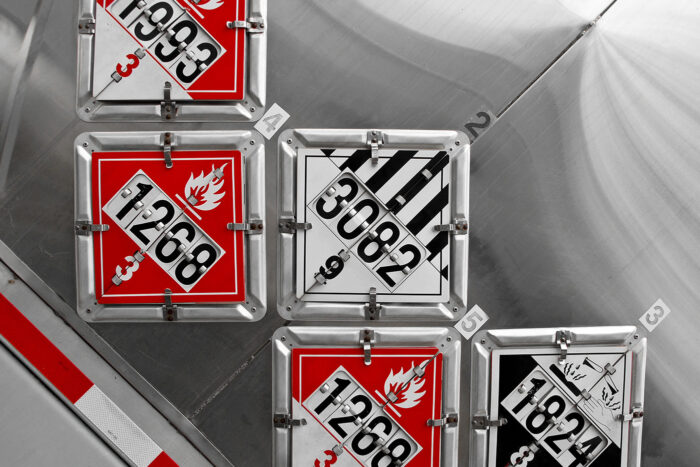Why You Should Care About What’s Moving Through Your Community
When we think about public safety, we often focus on what’s happening in our communities: crime prevention, infrastructure upkeep, emergency services. But there’s a critical risk that often moves through our cities and counties every single day – hazardous materials.
Hazmat Is on the Move And Often Under the Radar
Every day, thousands of shipments of hazardous materials such as fuel, chemicals, and industrial waste travel by road, rail, and water through neighborhoods, downtown corridors, and rural stretches of America. In many cases, local jurisdictions don’t even realize the volume or nature of what’s passing through their communities.
Why? Because this data isn’t always reported or easy to obtain. Yet when an incident occurs, local first responders are expected to act quickly and effectively. That’s where the gap becomes dangerous.
Real Risks, Real Consequences
Hazardous material spills and accidents may not happen often, but when they do, the impact can be severe both in human terms and financial cost. Delays in identifying the substance, unclear routing of emergency vehicles, or misinformed evacuation zones can all turn an incident into a crisis.
Just consider:
- Do you know which highways or rail lines in your county see the most hazmat traffic?
- Are your emergency plans tailored to the specific materials moving through your jurisdiction?
- Could your community respond effectively if a spill occurred tomorrow?
If the answer is no or “I’m not sure” – you’re not alone. But that’s precisely why Hazardous Commodity Flow Studies (HCFS) exist.
What a HCFS Can Do for Your Community
A Hazardous Commodity Flow Study provides a detailed, data-driven look at the types, volumes, and routes of hazardous materials that pass through a given area. With the right study in hand, municipalities, planning agencies, and emergency managers can:
- Identify high-risk corridors
- Improve routing for hazmat response units
- Justify grants from FEMA, DOT, and state agencies
- Coordinate with regional partners and infrastructure planners
- Strengthen Local Emergency Planning Committee (LEPC) efforts
In short: a HCFS gives you the intel you need to prepare smarter and protect better.
Grant application window opening soon
Many counties fund these studies through the Hazardous Materials Emergency Preparedness (HMEP) grant. While Indiana Department of Homeland Security (IDHS) has not opened the grant application yet, the site was updated recently to notify no major changes to the grant process this year. The application window will likely be very short again, so we strongly recommend preparing now to avoid delays. Let us know if you need any assistance!
To apply for federal funding opportunities, you’ll need:
- An active Unique Entity Identifier (UEI)
- A current status in the System for Award Management (SAM) – may take 4+ weeks to activate after submission
- To submit a notarized letter confirming the authorized entity administrator (required for renewals/updates in SAM)
- Registration as an active supplier/vendor and bidder with the State of Indiana
What to do now:
• Vote to confirm the need for a HazMat Commodity Flow Study
• Begin gathering required documentation
• Start the SAM.gov process or confirm current registration status
• Identify any unused emergency planning funds that must be spent before year-end
Helpful Links for Indiana Applicants:
• Indiana HMEP Grant Program Overview (IDHS)
• FY24 HMEP NOFO PDF (for reference)
• SAM.gov – Federal Registration & UEI Info
• Indiana Supplier Portal – Vendor/Bidder Registration
Planning Isn’t Paranoia – It’s Preparedness
You don’t have to wait for an incident to realize what’s at stake. Knowing what’s on the move today could save lives tomorrow.
SESCO has helped counties, cities, and regional agencies across the Midwest conduct HCFS that lead directly to more resilient communities and stronger emergency response plans. Let’s talk about how we can do the same for yours.
Reach out today to get started – Alexa is ready to help!

